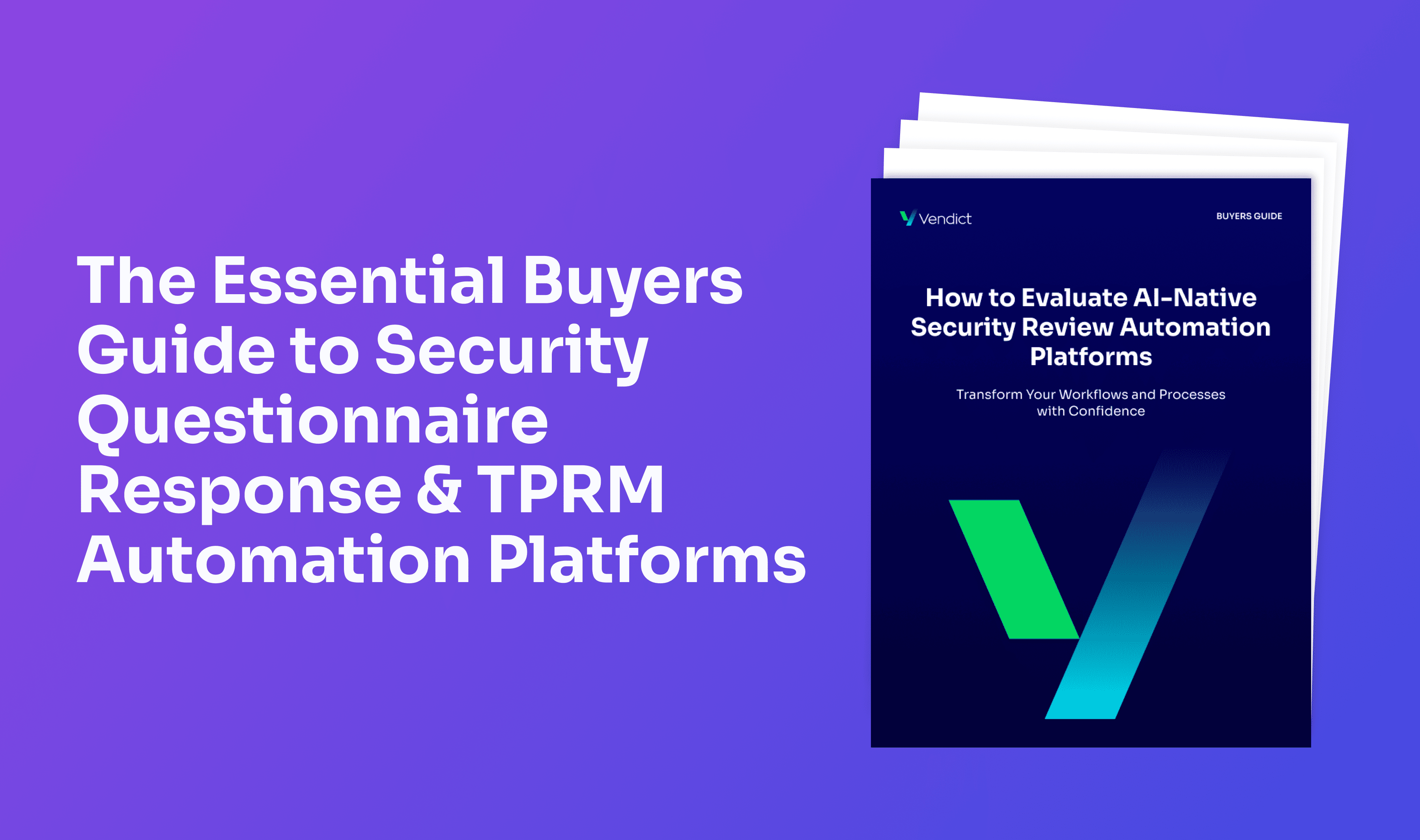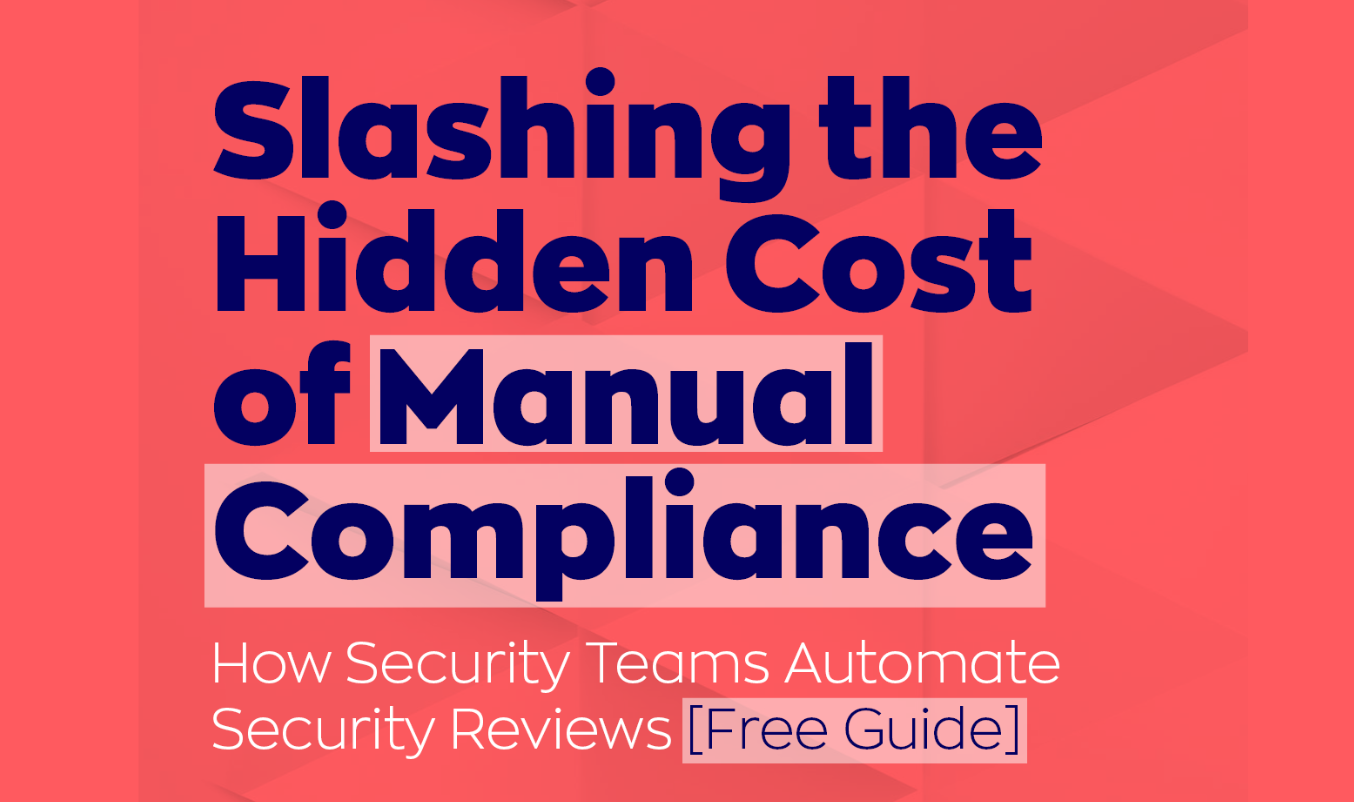Vendor Due Diligence: A Key to Risk Mitigation

Building solid alliances is at the heart of thriving in today's global marketplace. They offer a way to leverage complementary strengths, access new markets, and innovate faster. However, with these opportunities come risks, where vendor due diligence comes into play.
Vendor Due Diligence is a rigorous process that businesses undergo to assess a potential partner's financial, operational, and legal standing. It's a critical step before forging any partnership or finalizing an RFP (Request for Proposal).
As partnerships become the bedrock of modern business strategies, understanding how to create a comprehensive vendor due diligence report and implement best practices is paramount. Taking care of due diligence ensures that partnerships can then be built on trust, transparency, and mutual growth.
The Main Objectives of Vendor Due Diligence
Vendor due diligence is a robust process that serves multiple core objectives. One of the primary goals is to minimize risk. By applying rigorous analysis to assets destined for partnerships or sale, companies can identify potential pitfalls, uncertainties, and challenges that might arise in the partnership. Speed and efficiency in the due diligence process can often be critical in the early stages of a successful partnership, ensuring no stone is left unturned and all concerns are addressed.
Legal compliance is another vital objective. It's essential to ensure that the target business operates within the law, adhering to all regulatory requirements. This not only helps in avoiding potential legal pitfalls but also establishes a foundation of trust and transparency.
Financial stability is also a critical aspect to consider. By understanding the financial performance, trends, and cash flows of a potential partner, businesses can gauge the long-term viability and profitability of the partnership. Assessing operational security ensures that the partner's business operations align with the company's standards and don't pose any unforeseen challenges.
Lastly, ensuring business continuity and resilience is paramount. In a dynamic business landscape, partnering with businesses that can adapt, evolve, and thrive amidst challenges is crucial. This ensures that the partnership remains strong, even in the face of adversity.
How Can You Automate Vendor Risk Management?
When it comes to vendor risk management, automation is reshaping how we approach and navigate this crucial aspect of business operations. Embracing automated questionnaires is one of the initial steps in this journey. Organizations can efficiently collate vital information from vendors by utilizing questionnaires, making the data-gathering process more coherent and streamlined. The integration of AI enhances this mechanism, offering a meticulous analysis of vendor responses and highlighting any potential areas of concern or risk.
Next is the incorporation of advanced risk-scoring systems. These sophisticated platforms delve into the intricate details of vendor interactions and data, assigning quantifiable risk scores to each vendor. This approach empowers organizations with immediate and actionable insights, enabling a more nuanced understanding of the risks inherent in each vendor relationship and facilitating well-informed decision-making processes.
However, automation in vendor risk management extends beyond initial assessments and data analysis. Keeping organizations informed and alert to potential risks is crucial, and this is where automated alert systems prove invaluable. They monitor vendor activities and interactions in real-time, ensuring any discrepancies or areas of concern are promptly identified and addressed. This constant vigilance ensures that organizations can act swiftly, maintaining the integrity of their vendor relationships.
The advancements in automation have also revolutionized contract management processes. The modern tools available today allow for meticulous management of every aspect of a contract, from its inception to compliance monitoring and renewal. This holistic approach to contract management simplifies vendor interactions and ensures stringent adherence to compliance norms and regulations.
Main Approaches to Vendor Due Diligence
Vendor due diligence is multifaceted, and businesses have various strategies to conduct it effectively. The choice often depends on the company's resources, the complexity of the vendor landscape, and specific business requirements. Here are the primary approaches:
In-house Vendor Due Diligence
Many larger companies or those with ample resources choose the in-house route. It involves internally managing vendor data collection and analysis. This DIY approach offers more control and flexibility. However, it also requires significant expertise and resources to be effective.
Outsourced to Third-Party Due Diligence Providers
Outsourcing vendor due diligence becomes a viable option for businesses that may be resource-constrained or prefer an external perspective. Companies can ensure a thorough assessment without investing heavily in internal capabilities by employing third-party experts.
This approach allows the in-house team to focus on risk identification and remediation, leaving the assessment and verification to external experts.
Collaborative Approach: A Blend of In-house and Outsourced
Some companies opt for a hybrid model combining internal and external resources. It offers a balanced approach, leveraging the strengths of in-house expertise while benefiting from the third-party providers' specialized knowledge and tools.
Each approach has its merits and challenges.
The key is understanding the organization's unique requirements and choosing a strategy that best aligns with its objectives and resources.
Important Steps in Performing Vendor Due Diligence Report
A comprehensive vendor due diligence report is crucial for businesses looking to forge solid, risk-free partnerships. Here are the essential steps involved in crafting an effective report:
- Setting Objectives: Begin by clarifying the goals of the due diligence process. Are you looking to verify financial stability, assess compliance, or understand operational challenges? Setting clear objectives will guide the entire process.
- Gathering Necessary Information and Documentation: Accumulate all relevant data concerning the vendor. This includes financial records, operational metrics, legal documents, and more. Comprehensive data collection ensures a holistic assessment.
- Performing Financial Analysis: Delve deep into the vendor's financial health. Assess their cash flows, profitability, financial stability, and potential financial risks.
- Reviewing Legal and Regulatory Compliance: Ensure the vendor adheres to all legal norms and industry regulations. Non-compliance can pose significant risks in partnerships.
- Conducting Operational Assessments: Understand the vendor's operational capabilities. This includes assessing their supply chain, production capacities, technology infrastructure, and overall operational efficiency.
- Considering Information Security and Data Privacy: Data security is paramount in today's digital age. Evaluate the vendor's cybersecurity measures, data handling practices, and compliance with data protection regulations.
- Checking Business Reputation and References: The vendor's reputation in the market can offer valuable insights. Check references, client feedback, and public records indicating past challenges or disputes.
- Identifying and Mitigating Risks: After gathering all the information, pinpoint potential risks associated with partnering with the vendor. Develop strategies to mitigate these risks, ensuring a smooth and profitable partnership.
Vendor Due Diligence Best Practices
To ensure an effective vendor due diligence process, businesses should consider adopting the following best practices:
- Standardizing the Process: Develop a consistent methodology for vendor evaluation. Standardized checklists, criteria, and scoring systems can produce more objective and comparable results.
- Conducting Thorough Background Research: Dive deep into the vendor's history. Understanding past performance, legal disputes, and overall track record can offer valuable insights.
- Visiting Vendor Facilities: Whenever possible, conduct on-site visits. This allows for a firsthand assessment of the vendor's operations, infrastructure, and working conditions.
- Evaluating the Vendor's Supplier Network: Understand the vendors behind your vendor. Assessing the reliability and quality of their supply chain can prevent potential disruptions.
- Checking References and Client Feedback: Speak directly to the vendor's past and current clients. Their experiences can provide insights into the vendor's reliability, professionalism, and quality of service.
- Documenting Findings and Recommendations: Maintain detailed records of the due diligence process, findings, and any recommendations. This not only aids in decision-making but also provides a reference for future assessments.
Bottom Line
In an age where data breaches and cyber threats are becoming increasingly common, the importance of robust security measures cannot be overstated. Security questionnaires, a critical tool in this endeavor, enable organizations to evaluate and ensure the security practices of their partners. While their relevance is undisputed, in today’s fast-paced digital business world, the traditional manual approach to handling them has proven inefficient and error-prone.
Automation is the much-needed solution, offering speed, accuracy, and consistency. By adopting best practices and leveraging modern technologies, businesses can ensure compliance and foster trust and transparency with their partners. The future of security questionnaires is undeniably intertwined with automation.
As cyber threats evolve, so must our assessment and risk management methods. Embracing automation and adhering to best practices will ensure that organizations stay one step ahead, safeguarding their assets, reputation, and, most importantly, their customers.
.png)








.png)
